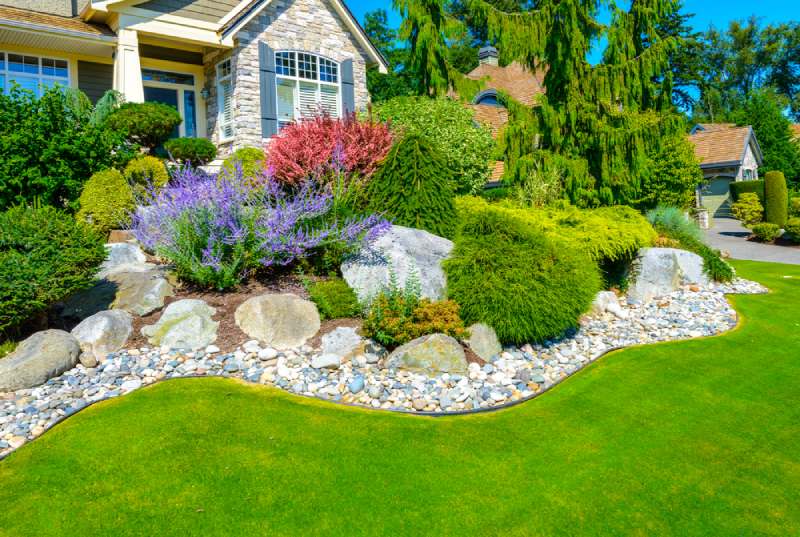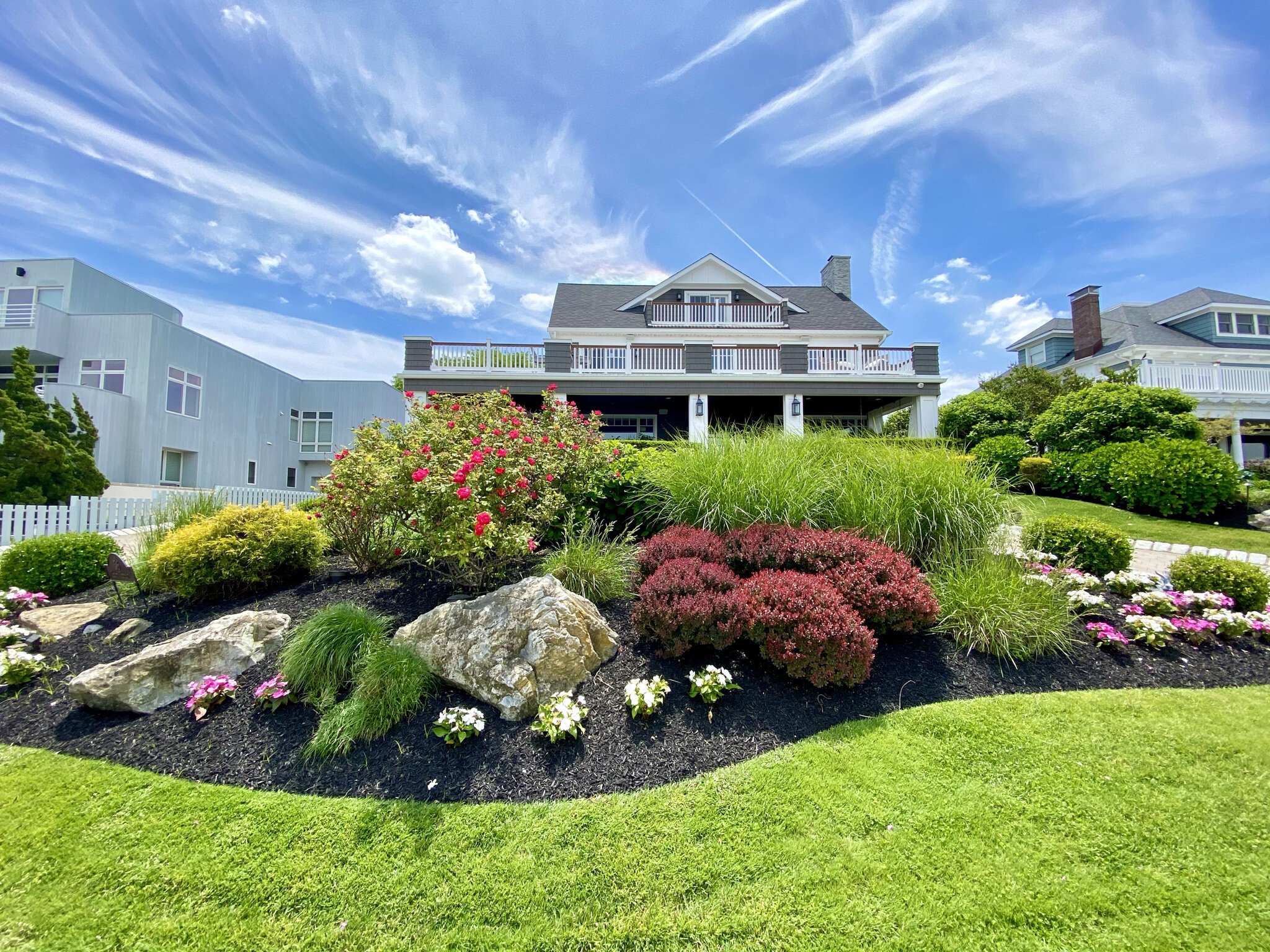The Best Guide to Preserving Your Backyard with Palm Desert Landscaping
The Best Guide to Preserving Your Backyard with Palm Desert Landscaping
Blog Article
A Comprehensive Overview to Creating and Implementing Effective Landscape Design Solutions
The art and science of landscape design expand past simple looks; they include a thoughtful integration of layout principles, ecological stewardship, and practical application. What methods can one use to make sure these landscapes not just flourish however also prosper in harmony with their surroundings?

Recognizing Landscape Layout Concepts
One may question what fundamental elements add to effective landscape layout. At its core, effective landscape layout rests on numerous key principles that lead the arrangement and choice of components within a space. These concepts consist of unity, equilibrium, percentage, and rhythm, each serving to produce a harmonious outside environment.
Unity refers to the natural relationship among various components, guaranteeing that they collaborate cosmetically and functionally. Equilibrium can be achieved via unbalanced or balanced plans, permitting the landscape to really feel stable and inviting. Proportion includes understanding the range of components in relation to each other and the surrounding environment, promoting visual harmony and comfort.

Analyzing Your Outdoor Space
Before applying the principles of landscape layout, a thorough assessment of your outside area is vital. This preliminary analysis assists specify the scope of your landscape design task and ensures that your layout lines up with the unique attributes of your home. Begin by examining the dimensions of your area, taking exact dimensions to understand the readily available location for various aspects such as paths, gardens, and outdoor patios.
Following, observe the existing features of your landscape, including topography, soil high quality, and water drainage patterns. These aspects significantly affect plant choice and positioning. Additionally, analyze the sunlight exposure across various areas throughout the day, as this will certainly influence the sorts of plants that grow in your garden.
Think about the microclimates created by structures, trees, and other challenges, as they can impact temperature and wetness levels. Last but not least, make note of any kind of existing plants or hardscape components that you want to retain or remove. This comprehensive evaluation lays the foundation for a efficient and well-informed landscaping remedy, guaranteeing that your style is not only cosmetically pleasing however likewise useful and sustainable for years to find.
Lasting Landscaping Methods
Incorporating lasting landscape design methods is important for developing an environmentally accountable exterior space. These methods not just promote eco-friendly equilibrium however also boost the aesthetic and practical value of a landscape. One foundational technique is the usage of indigenous plants, which require less water and upkeep while sustaining regional wildlife. Applying effective watering systems, such as drip watering, reduces water waste and guarantees that plants get sufficient moisture.

Another efficient method is the critical positioning of bushes and trees to supply all-natural windbreaks and color, therefore lowering energy expenses (Palm Desert Landscaping). Rainfall yards can be incorporated right into the landscape layout to handle stormwater overflow effectively, filtering system toxins before they go into rivers
Selecting the Right Plant Kingdoms
Selecting the right plants for your landscape is critical to accomplishing both aesthetic appeal and discover this eco-friendly harmony. The procedure starts with an understanding of your local climate, soil conditions, and the particular microenvironments within your landscape. Evaluating factors such as sunlight direct exposure, moisture levels, and existing vegetations will assist you pick plants that thrive in your unique setting.
Consider incorporating native plants, as they are well-adapted to neighborhood problems, require less maintenance, and assistance neighborhood wildlife. Furthermore, choosing a diverse selection of species can boost biodiversity while lowering the threat of condition and bug break outs. It is vital to examine the growth habits, growing durations, and seasonal shades of potential plants to create a dynamic and natural landscape.
In addition, think of the intended use the area; for example, if the area will experience high foot traffic, select resistant ground covers. By thoughtfully selecting plants that align with both your ecological you can try these out needs and visual goals, you can develop a lasting landscape that not only boosts your building however also adds positively to the bordering ecosystem.

Application and Maintenance Strategies
As soon as the appropriate plants have actually been picked for your landscape, the focus shifts to effective implementation and continuous upkeep approaches. Successful setup starts with correct site prep work, which consists of dirt testing to determine nutrient degrees and pH, adhered to by modifying the dirt as needed. Thoroughly organize plants according to their development practices and light needs, guaranteeing ample spacing to promote healthy development.
Irrigation is a critical component of implementation. Develop a watering schedule that takes into consideration the certain needs of each plant types, changing for seasonal adjustments. Utilizing drip watering systems can boost water efficiency and minimize runoff.
Maintenance approaches have to be applied to ensure the longevity and vitality of your landscape. Regular jobs consist of weeding, mulching, and pruning to control growth and protect against illness. Fertilizing needs to be conducted based upon dirt examinations, offering the essential nutrients without over-fertilizing.
Keeping track of for conditions and bugs is important; early detection can avoid substantial damages. Last but not least, seasonal changes to maintenance routines, such as winterizing perennials and preparing for spring development, will certainly make click certain that your landscape continues to be healthy and balanced and visually appealing year-round.
Final Thought
In verdict, effective landscaping solutions call for a detailed understanding of design principles, careful assessment of exterior areas, and the application of sustainable strategies. The option of ideal plant types plays a crucial duty in boosting visual charm and environmental resilience - Palm Desert Landscaping. Effective application and recurring maintenance even more make certain the durability and vigor of landscapes. By incorporating these aspects, landscapes can be transformed into beautiful, useful environments that advertise biodiversity and contribute positively to area health.
One could question what foundational components contribute to effective landscape design. At its core, successful landscape style hinges on several vital concepts that guide the plan and selection of components within a room.Picking the right plants for your landscape is important to attaining both aesthetic allure and environmental consistency. It is important to examine the development habits, growing durations, and seasonal colors of possible plants to develop a natural and dynamic landscape.
When the right plants have been picked for your landscape, the focus moves to reliable execution and ongoing upkeep methods.
Report this page